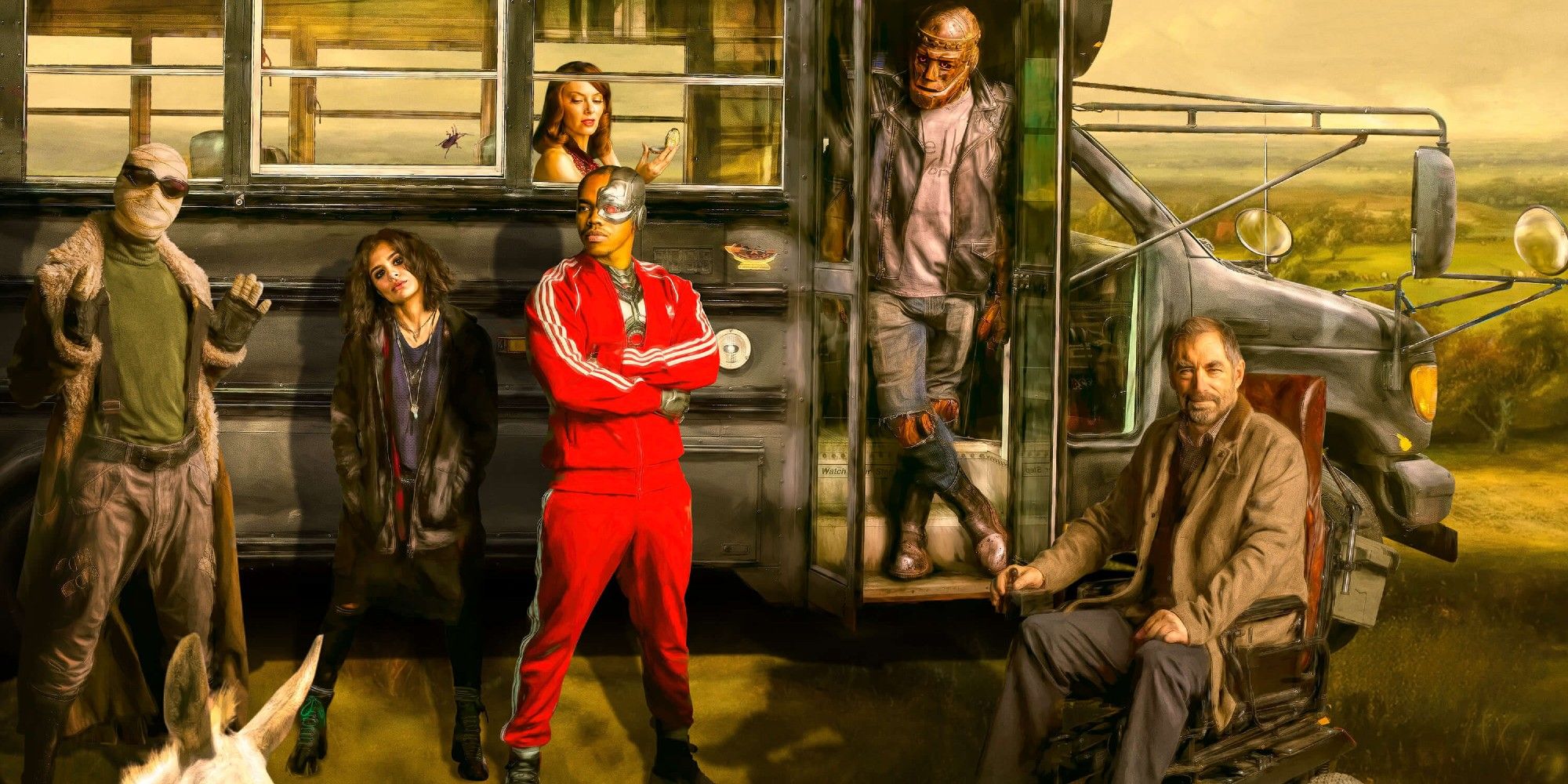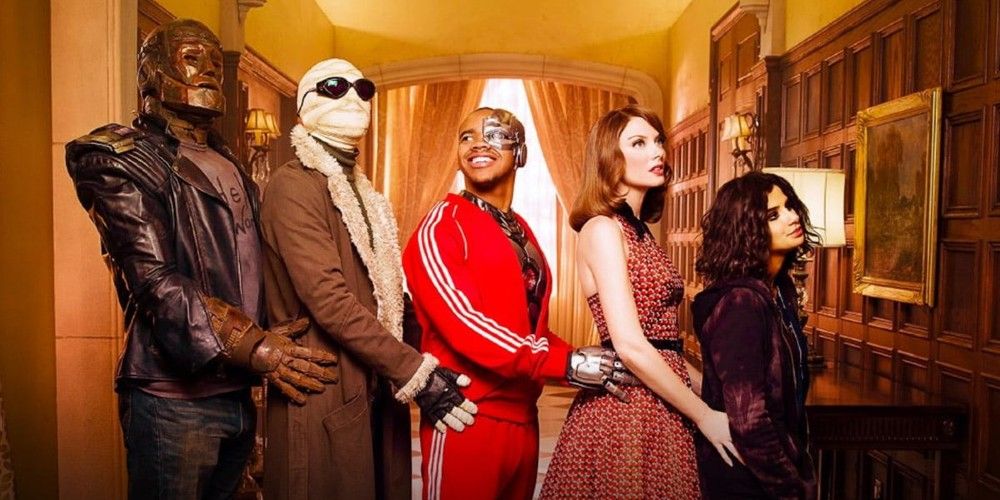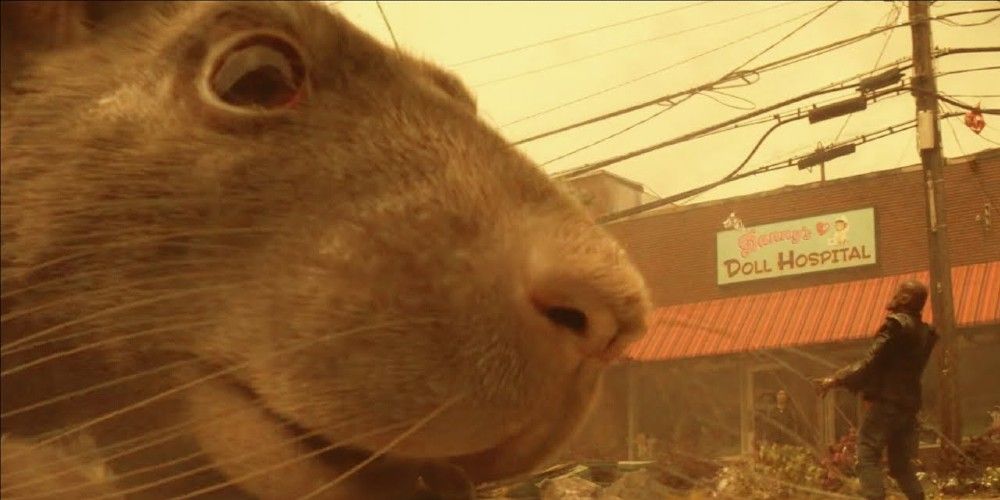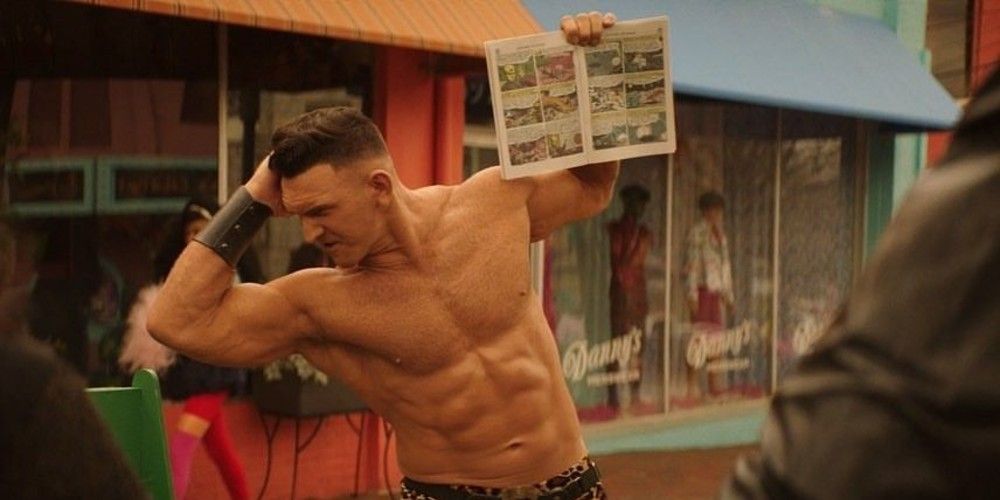DC’s Best Team-up Project Isn’t Zack Snyder’s Justice League (But It Does Feature Cyborg)

It’s safe to say superheroes have dominated pop culture in the 21st century. After Marvel took early risks with undervalued properties, they have built a cultural empire expanding into Disney Plus TV series (like the upcoming Loki) and increasingly obscure characters like The Eternals and Shang-Chi and the Legend of the Ten Rings.
The DC Universe has struggled to maintain the same franchise-oriented direction, its creator-focused projects not quite fitting into the mold, including the well-documented saga of Zack Snyder’s Justice League. But a result of DC’s strange scattershot approach is that its adaptations can be more unorthodox. In addition to the big screen, DC properties have successfully landed on the CW ‘Arrowverse’ and on HBO Max with Harley Quinn and Doom Patrol.
While some superhero shows stay relatively grounded, Doom Patrol belongs in the pantheon of Legion, The Umbrella Academy, or Legends of Tomorrow, which embrace the boundless potential of the superhero subgenre. Dr. Niles Caulder (Timothy Dalton), also known as “Chief,” is a wheelchair-bound scientist who shelters various misfits suffering from horrible accidents. Rita Farr (April Bowlby) is a ‘50s actress whose exposure to toxic gas made her body able to stretch and morph, although Rita frequently loses control and melts into puddles in humiliation.

Larry Trainor (voiced by Matt Bomer) is a ‘60s Air Force pilot whose body is burnt and irradiated during an experimental flight that also imbues him with a ghost-like “Negative Spirit.” Crazy Jane (Diane Guerrero) is a woman with severe mental trauma that manifests as 64 “alternate personalities,” many of whom possess a unique superpower, from mind-control to teleportation to creating subtitles thrown like blades. The newest addition is Cliff Steele (voiced by Brendan Fraser), a race-car driver whose brain was salvaged after a car wreck and implanted in a clunky “Robotman” body.
Looking over the characters reveals relatively big names – Bomer and Fraser making more appearances in pre-accident flashbacks – and how most suffer some bodily mutilation. All of them are rendered “freaks” by their backstories, leaving Doom Patrol less a “superhero show” and more an extended therapy session for all involved (which happens literally in “Therapy Patrol”). A running joke is how little the characters believe or care about “superheroes” and actively disparage the term “Doom Patrol.” Cyborg (Joivan Wade) is a more “traditional” superhero who is fully formed by the first episode, although his own cybernetic implants and body scars draw him towards the strange household group.

Such scars are far deeper than flesh, as viewers of Zack Snyder’s Justice League will know Cyborg’s (Ray Fischer) accident coincides with his mother’s death, leaving his part-machine existence also coupled with survivor’s guilt. All of the group’s accidents only intensify deeper trauma and regrets, like Rita desperately clinging to her former stardom or Cliff wishing to reconnect to his estranged daughter, especially since she now thinks he’s dead, and even if she didn’t, can no longer touch his skin. Larry is tormented by the Negative Spirit living inside him, becoming a metaphor for his repressed sexuality from having an affair with a man in the 1960s.
Doom Patrol grapples with these heavy topics of trauma and self-hatred, but it lightens the mood with bizarre and outlandish events. Picking examples is foolish since wonderful insanity happens every episode, such as the Beard Hunter (Tommy Snider) tracking anybody by ingesting their facial hair. Or the time-traveling Doctor Tyme (voiced by Dan Martin) – whose helmet is an angry clock-face – trapping members in a ‘70s roller-disco. Or using an entirely different time-manipulation to defeat the apocalyptic sky eyeball “Decreator” by planting historical seeds for a cult to make another godlike eyeball the “Recreator.” Or the sentient genderqueer Danny the Street, a living benevolent “neighborhood” that houses runaway misfits.
This last item also invokes the “Bureau of Normalcy” which attempts to catalogue, weaponize and exterminate anything that “subverts” their standards of normal. In this antagonist, the purpose of Doom Patrol becomes clear: to flaunt and defeat such oppressive conformity. Both its ridiculous off-beat plots and damaged characters become champions of existing on their own terms.

Admittedly most of these crazy high-concept ideas were taken directly from Grant Morrison’s influential Doom Patrol run. The writer’s 1989-1993 work took the experimental time for comics and pushed it even further by facing both psychological complexity and surreal villains like the Brotherhood of Dada. Although Doom Patrol hasn’t quite reached them just yet, most of the characters' appearances are startlingly comics-accurate and sometimes exact panels – like Crazy Jane painting in the rain – are used in the show.
Morrison also tends towards metacommentary in their work, which is replicated in Doom Patrol via Mr. Nobody (Alan Tudyk) narrating over Season 1 and using his near-omnipotent powers to toy with the Doom Patrol and decimate the fourth wall. Doom Patrol embraces the spirit of its source material, using the HBO Max TV-MA Rating (the equivalent of an R-Rating) to show Robotman ripping a Nazi in half.
Doom Patrol draws viewers in with its uncensored strangeness – this article only touching the iceberg – but it keeps them with a witty and subtly acted show of outcasts banding together to heal and find a new family. Despite Season 2 ending on a cliff-hanger, due to COVID-19 shutting down production on the last episode, the show has thankfully been renewed for a third season. Describing Doom Patrol as a “superhero show” underserves the imaginative character-based detours and audacity of the series, which recognizes that saving the world comes second to saving yourself.

Post a Comment